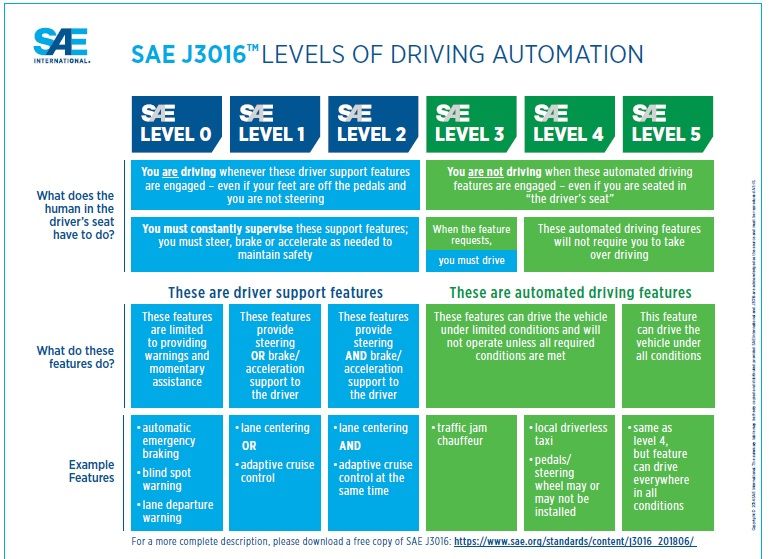
LEVELS OF DRIVING AUTOMATION standard for consumers
SAE International recently unveiled a new visual chart that is designed to clarify and simplify its J3016 “Levels of Driving Automation” standard for consumers. The J3016 standard defines six levels of driving automation, from SAE Level Zero (no automation) to SAE Level 5 (full vehicle autonomy). It serves as the industry’s most-cited reference for automated-vehicle (AV) capabilities. The update is the latest iteration of the J3016 graphic first deployed in 2016. As the industry gets closer to producing AVs in volume, the SAE J3016 Technical Standards Committee saw the need to more clearly explain the features in each of the six driving levels, and how they relate to consumers’ increased safety and convenience, noted Jack Pokrzywa, SAE’s Ground Vehicle Standards Director.
External parties, including insurance companies, the American Automobile Assoc., and the Transportation Research Board, provided input for the new chart while it was under development. SAE’s marketing group worked with the committee on the graphic’s text and design to ensure it is technically faithful to the J3016 standard, said Keith Rigby, Marketing Communications Director. They collected information at the inaugural “SAE Demo Day” in May 2018 that informed the design of the new chart. Feedback was also gathered from AV riders during the SAE Demo Day held in December 2018 at Babcock Ranch in Florida. The latest J3016 graphic is a living document. It will continue to evolve gradually as the industry and the technical standard J3016 itself evolves, Pokrzywa explained.
Source: Automotive Engineering
Automotive Engineering magazine is the No. 1 resource for engineers across multiple disciplines in the automotive industry. Published 10 times annually, Automotive Engineering engages decision makers who buy and specify product. Each issue includes special features and technology reports, from topics such as: vehicle development and systems engineering, powertrain and subsystems, environment, electronics, testing and simulation, and design for manufacturing.


